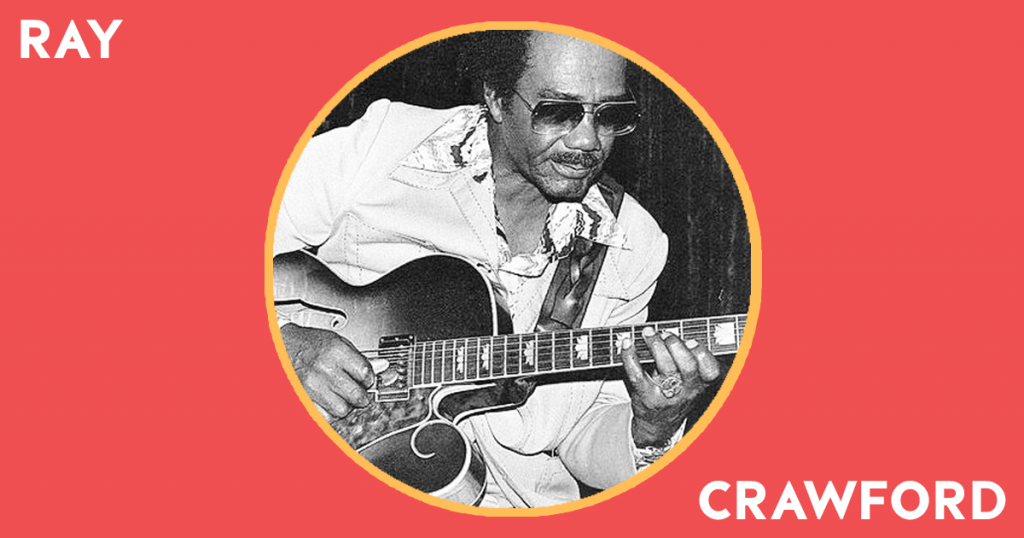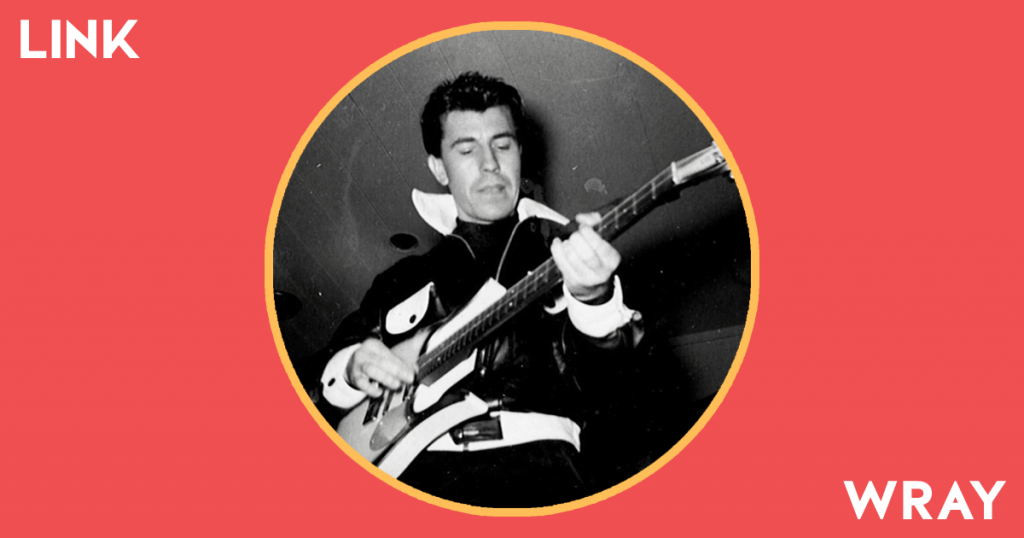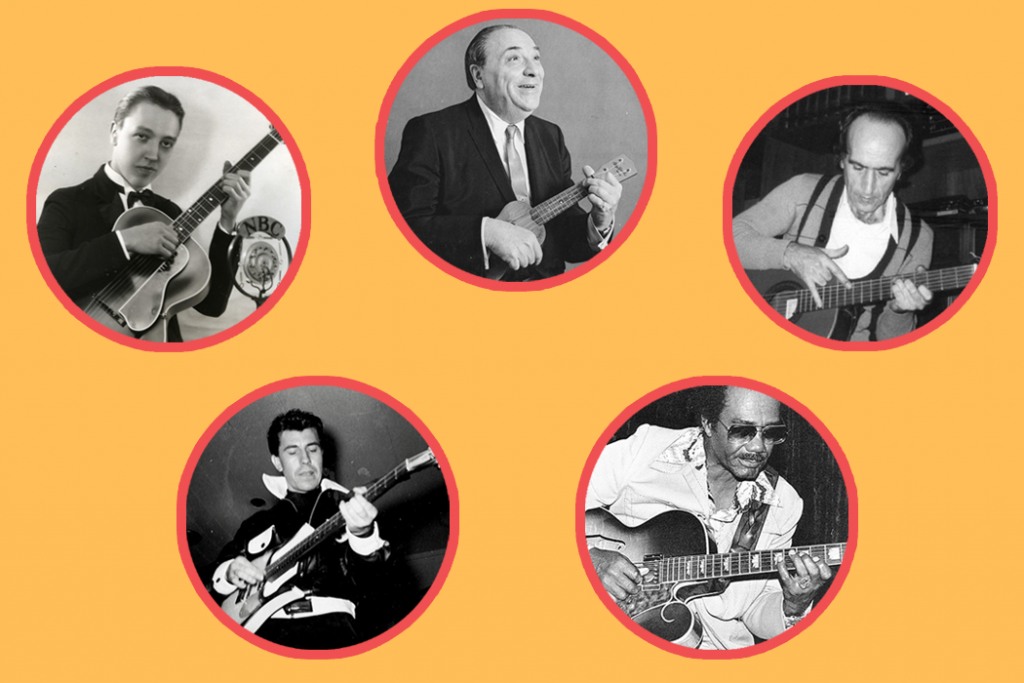+ Our brand new course with The Dillinger Escape Plan’s Ben Weinman teaches how to make a living in music without making sacrifices. Check out The Business of Uncompromising Art, out now exclusively on Soundfly.
Compared to most instruments, the modern guitar is a relatively new instrument. While classical instruments like piano, brass, and woodwinds all have hundreds of years of pedagogy behind them, the language of guitar music and how we learn to play is new and constantly changing.
Today, we can find chords to any song on the internet in seconds, but it wasn’t really that long ago that Paul McCartney had to go on an intercity search for the “lost chord.” (Hint: it was a seventh chord. Those are awesome.)
Things have definitely changed, and the guitar has been an object of fast and fascinating innovation (some of it illegal) throughout its life as a central musical tool. As it gained popularity in the mid-20th century when more musicians began to master the instrument, some pioneers had to create new ways to play in order to find their personal sound. As a result, the instrument itself has grown immensely.
Sometimes, we can even trace the origins of auxiliary guitar equipment like amplifiers and pedals, and certain body designs, attributes, and specific playing styles to singular artists themselves. Jimi Hendrix singlehandedly changed how guitarists use effects pedals even before his legendary performance at Woodstock in 1969. And then, of course, there are artists who become tinkerers themselves, altering their instruments to find never-before-heard sounds.
Here are five pre-1960s guitarists who were truly innovative in the way they approached their instrument. Some changed the way we hear music today, and others just had a cool idea that never really caught on. This list could, of course, go on for ages, so let’s consider this a conversation starter. In fact, if we hadn’t already run a pretty extensive piece on the original master tinkerer himself, Les Paul, he’d be on this list for sure!

Roy Smeck came from a vaudeville background where he played guitar, ukulele, steel guitar, and banjo, earning him the nickname “The Wizard of the Strings.” He utilized novelty techniques for playing his instruments, including playing with his teeth, behind his back, and with a violin bow. During his long life, he was featured in a number of films, and in 1985, Wizard of the Strings, a documentary about his life, was even nominated for an Academy Award.
See Smeck in action playing “Tiger Rag” on ukelele below. (There are YouTube videos of Smeck playing just about every stringed instrument he could get his hands on, but he really tears it up in this one!) Watch his right hand for some virtuosic strumming, look out for his spinning ukulele moves, and check out the way he blows on the soundhole like a glass bottle!
+ Learn more on Soundfly: Discover all-new guitar sounds with our free series of bite-sized courses, Alternate Tunings for the Creative Guitarist.

The art of two-handed tapping was popularized by Eddie Van Halen, who blew minds with the technique when he dropped “Eruption” in 1978. He wasn’t, however, the first to it, and there’s a rabbit hole of information on the internet if you’re interested in deciding who really was. Roy Smeck was using the technique well before Van Halen and the guys even picked up their axes.
Vittorio Camardese surely didn’t invent the technique either, but his story is an interesting one. Camardese was a physician who was also a self-trained amateur guitarist. Whether he learned how to tap or developed it on his own is unknown, but he certainly mastered it independently and put his own spin on it. In his version of tapping, Camardese would play chord voicings with his left hand while playing bass lines with the index finger on his right hand and strumming with the other fingers.
Here he is on Italian television in 1965 playing “All of Me” until he’s rudely, and unfortunately, interrupted by the host!
+ Read more on Flypaper: “How to Play Sweeping Arpeggios on Guitar”

Ray Crawford was a professional jazz musician who became an innovator through circumstance. Originally a saxophonist and clarinet player who performed with Fletcher Henderson, Crawford switched to guitar after recovering from tuberculosis. As a guitarist, he became part of Ahmad Jamal’s new trio of piano, bass, and guitar.
As a member of this group, Crawford’s playing showcased a cool, articulate approach to melodic improvisation. The thing that sticks out most in his playing, however, is his unique percussive attack. Crawford would hit the fretboard of the guitar in order to become the de-facto percussionist in the trio, creating a sound that very convincingly mimics bongos or congas. While this technique hasn’t lived on in the same way that two-handed tapping has, Crawford’s approach was used by other top-notch jazz guitarists of the time, such as Herb Ellis and Tal Farlow.
Here he is playing “Love for Sale” from the 1955 album The Ahmad Jamal Trio.

Alvino Rey started by playing banjo and guitar, but he settled into a career as a pedal steel guitarist in the 1930s. Tinkering with electronics from a young age, he began amplifying his instruments, which caught the attention of Gibson, who hired Rey to create one of the first electric guitar pickups for the company.
Among Rey’s many creations was the “singing guitar.” Rey’s wife, singer Luise King, would stay offstage and place a microphone intended for military pilot communications onto her throat. This was wired to the guitar and affected and shaped the sound of the guitar signal to create the illusion that the instrument was singing. This later led to the development of the popular talkbox vocoder used by artists like Pete Drake, Peter Frampton, and Joe Perry.
Here’s Alvino Rey performing “St. Louis Blues” in 1944 with his “singing guitar” effect as sung by Stringy, the talking guitar puppet.
+ Learn more on Soundfly: Looking to deepen your knack for improvising? Take some cues from our free course, The Improviser’s Toolkit.

Possibly the ultimate rock-and-roll guitarist, Link Wray is credited with inventing the power chord and is probably the first person to intentionally record a distorted electric guitar tone. The story of Wray’s first single, 1958’s “Rumble,” starts with a live performance where his amp was mic’d and run through the house PA system, intended for vocals, which created a loud and distorted sound.
On NPR’s Fresh Air in 1997, Wray explained what happened when they took the song into the studio.
“When we started playing ‘Rumble,’ it was too clean…. So I took a pencil and I started punching holes in the speakers.”
“Rumble” reached number 16 on the US charts and was so hugely innovative that it was banned in many places for fear that it would incite violence. Musicians such as Bob Dylan, Jimmy Page, and Iggy Pop have cited their love of the song as an influence on their careers.
Rev Up Your Creative Engines…
Continue your learning with hundreds of lessons on songwriting, mixing, recording and production, composing, beat making, and more on Soundfly, with artist-led courses by Kimbra, RJD2, Com Truise, Kiefer, Ryan Lott, and Ben Weinman’s The Business of Uncompromising Art.




